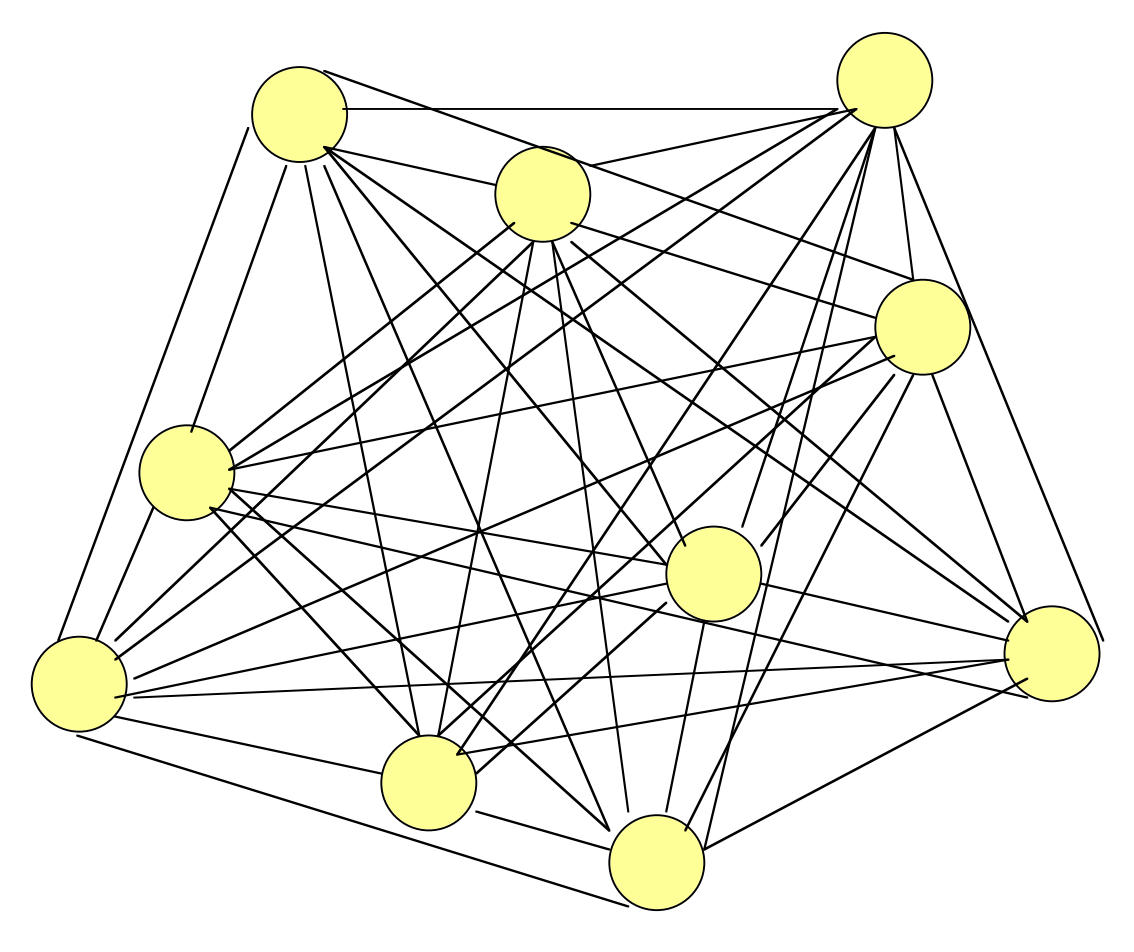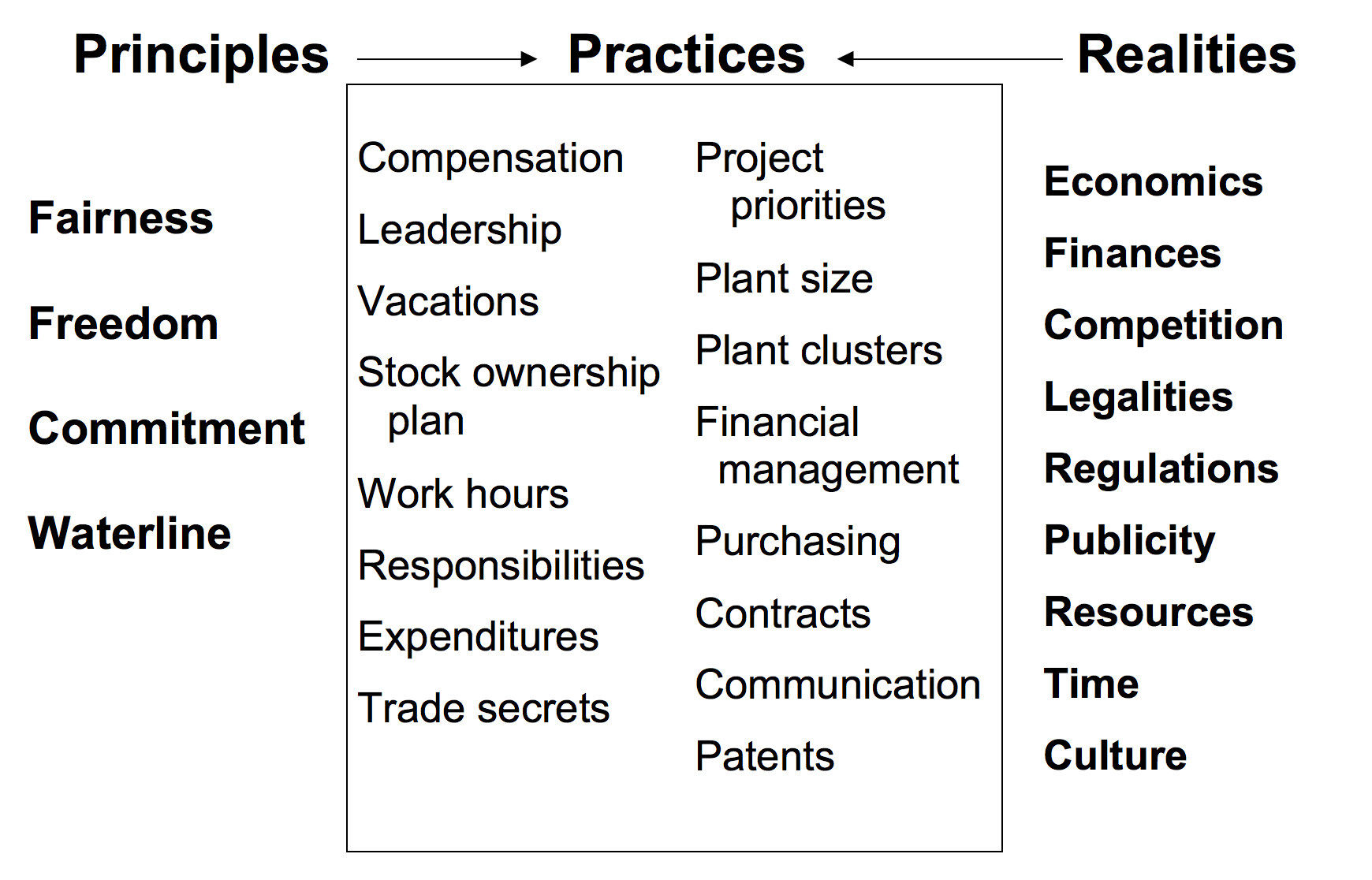Gore, Inc. is well-known and often cited as being free of hierarchy.
Gore describes its structure as a lattice organization:
"A lattice organization is one that involves direct transactions, self-commitment, natural leadership, and lacks assigned or assumed authority. Every successful organization has a lattice organization that underlies the façade of authoritarian hierarchy. It is through these lattice organizations that things get done, and most of us delight in going around the formal procedures and doing things the straightforward and easy way." — Bill Gore
"The simplicity and order of an authoritarian organization make it an almost irresistible temptation. Yet it is counter to the principles of individual freedom and smothers the creative growth of man. Freedom requires orderly restraint. The restraints imposed by the need for cooperation are minimized with a lattice organization." — Bill Gore

Each person in the Lattice interacts directly with every other person with no intermediary.
Bill aimed to create a work environment that he believed would free people from the constraints of bureaucracy and hierarchy, enabling them to maximize their inherent potential.
His theories were inspired by Douglas McGregor's book, The Human Side of Enterprise.
Lattice organization
Principles: Fairness, Freedom, Commitments, Waterline
Everyone will:
- Sincerely try to be fair with each other, suppliers, our customers, and all persons with whom we carry out transactions.
- Allow, help and encourage associates to grow in knowledge, skill, scope of responsibility and range of activities. (Freedom)
- Make his or her own commitments—and keep them.
- Consult with other associates before taking actions that might be “below the waterline” and cause serious damage to the enterprise. (Boat analogy: shooting the boat below the waterline—damaging the reputation or financial health of the business—could result in sinking it.)

Associates
- All employees are "associates".
- Every associate has a sponsor who guides him/her in growing in contribution.
- Leadership evolves based on knowledge, skill, experience or capability in the particular activity in which a team is involved.
- Leaders are associates who have developed followers.
- Each person in the lattice interacts directly with every other person.
- Teams or groups formulate their own plans of action rather than having them dictated to them.
- Each associate self-commits to projects or responsibilities.
Leaders:
- focus on business objectives
- coordinate activities
- align teams to meet goals
- many different types with different areas of focus
Leaders offer associates:
- Assistance in problem solving
- Acknowledgement of team accomplishments
- Encouragement
- Definition of problems
- Help in strategy formulation
- Explanation of business practices
- “Big picture” viewpoint
- Role model behavior
Sponsors:
- Engage in a one-on-one relationship
- Focus on the development and growth of the associate
Sponsors offer associates:
- Encouragement
- Guidance on principles and practices
- Feedback on performance
- Help in securing resources
- Advocacy for the associate in compensation discussions
- Guidance in personal development planning
- Role model behavior
Sponsoring vs. Leading:
- Sponsoring is a one-on-one relationship. The focus is on the individual, helping them grow in their contribution.
- Leading is with a group or team. The focus is on the business opportunity, helping the individuals align with team and business goals.
- Sponsors and leaders are not necessarily two different people.